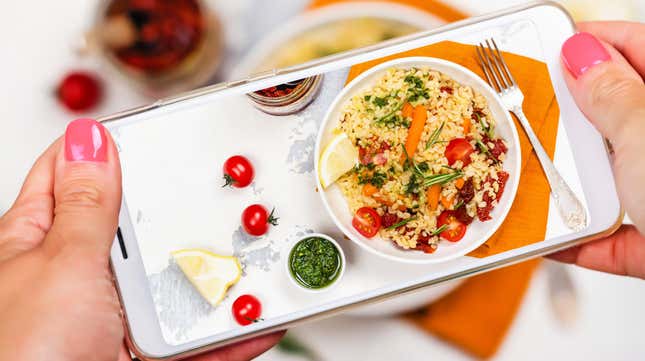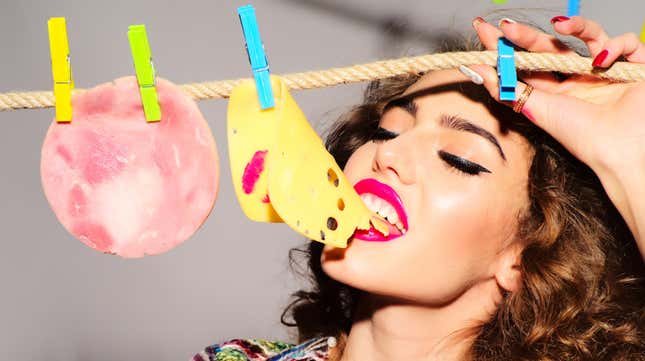
For all the food photos on Instagram, there are drastically fewer photos of people actually eating. In one sense, that’s logical: Not many of us think we look our best when we’re going to town on barbecue or housing a burrito. So the Instagram photos that do exist of people eating, especially people who identify as women, appear hyper-posed: a woman smiling behind an ice cream cone, or holding out her unicorn Frappuccino, or pointing to a giant slice of pizza. Rarely, though, is she ever actually eating said food. If we do see her eating the food, it’s often captioned as shameful/indulgent (“cheat day!”) or styled to look weirdly seductive.
A new Instagram hashtag hopes to change that. Nutritionist and intuitive eating counselor Alissa Rumsey created #WomenEatingFood earlier this month with the goal of collecting images of women eating and enjoying food “without explaining or justifying what/why they’re eating.” (Hat tip to Refinery 29 for bringing this hashtag to my attention.) More than 380 posts so far have used the hashtag. Those posts include women eating sandwiches, cake, spaghetti, ice cream, doughnuts, and nachos.
As Mel Garside, the nutritionist behind @chalkedupnutrition writes, “In a world where women are portrayed as thin, pretty ornaments eating salads with minimal calories—eating messy, flavor packed foods in whatever quantity is satisfying for us needs to be normalized again.” The hashtag is linked to the concept of intuitive eating or mindful eating, which has been billed as a diet alternative that encourages people to eat what they want when they are hungry, concentrating on whether your body feels hungry or full rather than focusing on calories or meal plans.
I’m reminded of another recent pop-culture moment that shouldn’t have felt as radical as it did: The scene from Hulu’s Shrill in which Aidy Bryant’s character eats leftover spaghetti from the fridge. Brooke Jackson-Glidden’s Eater essay explains in depth why Bryant’s character, Annie, is boundary-pushing: She’s an unapologetically fat woman living her life, which includes eating. But the spaghetti scene particularly encapsulates how her eating appears transgressive, even though it shouldn’t feel so shocking. She’s eating for no other reason than because… people eat. It’s not to advance the plot in some way, or to show shame, or to show whether or not she’s in control. She’s just eating spaghetti leftovers out of the fridge because people eat spaghetti leftovers out of the fridge.
It says something about portrayals of women—both by the media and by women ourselves via social media—that images of us engaged in activity that happens multiple times a day in public can still be perceived as abnormal. So thanks, #WomenEatingFood, for showing that plenty of women eat like this, not like this:




